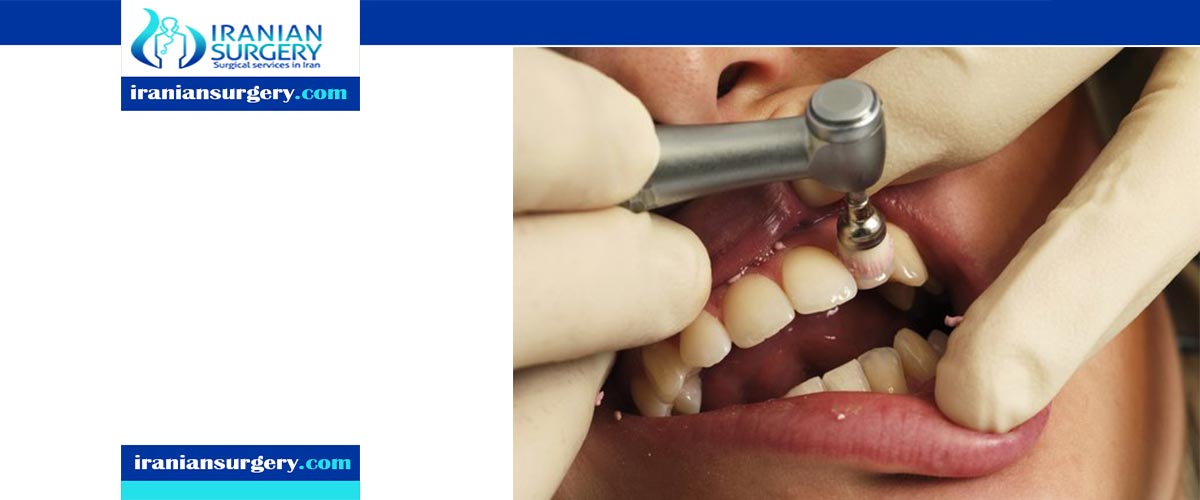Tooth polishing in iran

Tooth polishing in Iran
How much does tooth polishing in Iran?
Tooth polishing cost in Iran is sround $ 400
Tooth polishing in Iran is a dental procedure, which is used for the prevention of teeth problems. It also makes teeth appear whiter, stain-free, and glistening. This procedure improves dental health and aesthetics of the teeth.
In fact, tooth polishing in Iran is done to smooth the surfaces of teeth and restorations. The purpose of polishing is to remove extrinsic stains, remove dental plaque accumulation, increase aesthetics and to reduce corrosion of metallic restorations. Tooth polishing has little therapeutic value and is usually done as a cosmetic procedure after debridement and before fluoride application. Common practice is to use a prophy cup —a small motorized rubber cup— along with an abrasive polishing compound.
Read more about : Dentistry in Iran
About Iranian Surgery
Iranian surgery is an online medical tourism platform in Iran aiming to help people all around the globe to receive quality healthcare services as well as offering patients its medical consultation. In fact, it is a user-friendly online website providing people from all walks of life with lots of useful information about the best hospitals and professional dental surgeons in Iran.
Objectives of tooth polishing
Earlier, tooth polishing was routinely done as a part of dental prophylaxis. However, soon it was realized that the overuse of this technique erodes outermost covering of the tooth structure. The loss of the outer structure makes teeth more vulnerable to stains and plaque accumulation. Also, repetitive use of this procedure removes the protective fluoride layer surrounding the teeth.
These days, dentists do not recommend tooth polishing as a routine dental procedure, and a careful case selection is done prior to this procedure.
Read more about : Dental veneers in Iran
Advantages of tooth polishing
Tooth polishing is a procedure which not only polishes the teeth but also removes the dental stains, plaque, and microorganisms formed on the outer surface of the teeth.
The main advantage of tooth polishing over the tooth scaling (deep cleaning of the teeth) is that it is a painless procedure. Also, patients experience clean and smooth teeth instantaneously after the procedure.
Read more about : Dental implant in Iran
Different types of tooth polishing
. Therapeutic polishing - Many a times during a dental surgical procedure, the cementum covering the root is exposed. Therapeutic polishing assists in the removal of any microflora and endotoxins from the surface of cementum.
. Coronal / cosmetic polishing - This type of polishing removes the plaque and superficial dental stains. Superfine abrasive agents are used to make the enamel (outer layer covering the crown of the tooth) lustrous. Enamel surface is polished to an extent that it can even reflect the visible light.
. Superficial polishing - This technique polishes the crown of the tooth. However, this technique has nominal curative benefits, and is primarily done to improve the aesthetic appearance of the teeth.
. Selective polishing - Selective polishing is also termed as extrinsic stain removal or selective stain removal. This polishing technique is recommended post scaling procedure, and it removes any remaining stains.
Read more about : Types of dental implants
Which type of stains tooth polishing can remove?
There are two types of dental stains – endogenous and exogenous. Endogenous stains are internal stains which are caused due to certain dental defects such as developmental or drug-induced enamel hypoplasia. Exogenous stains are external stains, which arise due to poor dental habits and smoking.
Tooth polishing is beneficial in removing only the exogenous stains, and cannot remove the internal or endogenous stains.
Points to remember at the time of tooth polishing
. A correct technique should be employed during the procedure to minimize the abrasion on the tooth surface.
. Less abrasive polishing agent should be used.
. Pressure, speed of the polishing device, and time taken for the procedure should be carefully monitored.
Tooth polishing instruments
Tooth polishing instruments are both manual and engine-driven. Manual polishers are used by the dentists to manually polish the tooth surface with the help of their hands, whereas engine-driven polishing instruments require handpieces. Tooth polishing is usually performed with the help of mechanical device and a polishing agent.
Hand-held polishing instruments include:
. Porte polisher
. Polishing strips
Engine-driven instruments are:
. Rubber cups
. Air-powder polisher
I have decided to do Teeth polishing in Iran. What should I do?
You do not need to worry about your tooth until you pay more attention to all these issues before proceeding. The important thing is to find a dental clinic and dentist. If you are looking for Teeth polishing in Iran, you can contact us and get consultation from Iranian surgery.
Reference :
10 common question about tooth polishing
[kkstarratings]


